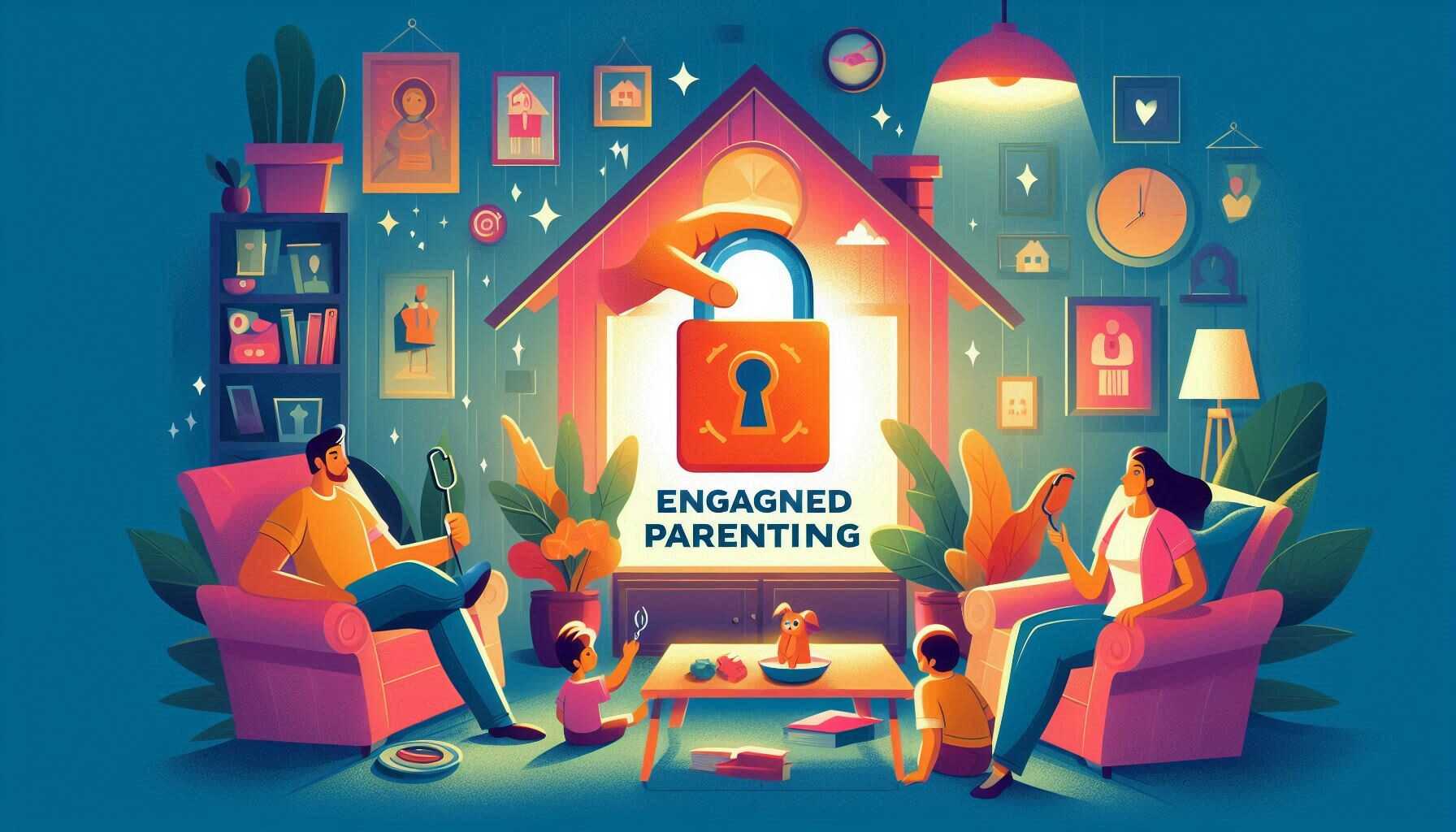[ad_1]
In our fast-paced world, where technology dominates our lives and distractions are just a click away, one critical skill has fallen by the wayside—active listening. As parents, it’s all too easy to get caught up in the hustle and bustle, inadvertently tuning out our children’s thoughts and feelings. You may find yourself nodding along while your mind races with to-do lists or what to make for dinner. This can leave your children feeling unheard and undervalued, which, let’s face it, is the last thing we want as caring parents.
Fear not! This guide is here to help you master the art of active listening, ensuring that you not only hear your children but truly understand them. We’ll explore what active listening is, its significance for your family, the challenges you might face, and provide actionable strategies that can transform your communication. So, let’s jump in and discover how you can become a more engaged and empathetic listener!
Understanding the Basics of Active Listening
Active listening is more than just hearing words; it involves being fully present in a conversation. It means giving your complete attention to the speaker—whether that’s your child or partner—and showing genuine interest in what they have to say.
Here are the fundamental concepts of active listening:
-
- Attention: Put away distractions; this includes your phone, television, or even chores waiting to be done. Focus on the speaker.
-
- Understanding: Engage with what is being said. Ask clarifying questions to ensure you truly grasp the message.
-
- Empathy: Delve into the speaker’s emotions and perspectives. Show that you care about what they are feeling.
-
- Feedback: Reflect back what you’ve heard. Use phrases like, “It sounds like you’re feeling…” to demonstrate your comprehension.
These elements work together to create a safe space for open dialogue, encouraging your child to express themselves freely.
Key Benefits of Active Listening for Parents and Children
Engaging in active listening not only strengthens your bond with your children but also fosters their emotional and social development. Here are some key benefits:
-
- Builds Trust: When your kids feel heard, trust flourishes. They are likely to be more open and share their thoughts without fear of judgment.
-
- Enhances Communication Skills: By modeling active listening, you teach your children valuable communication skills they can carry into their interactions with others.
-
- Promotes Emotional Intelligence: Understanding how to express and process emotions becomes easier when children know their feelings matter to you.
-
- Reduces Misunderstandings: Miscommunication is often the root of conflicts. Active listening helps clarify intentions and minimize misinterpretations.
-
- Encourages Problem-Solving: When children feel supported, they are more likely to tackle behavioral or academic challenges proactively.
When you practice active listening, you nurture a healthy, supportive family environment that thrives on positive communication.
Nurturing Minds: Essential Strategies for Early Childhood Development
Common Challenges with Active Listening and How to Overcome Them

While active listening is a powerful tool, it can come with its own set of challenges. Here are some common hurdles you might face and practical solutions to overcome them:
-
- Distractions: With smartphones buzzing and the TV blaring, staying focused can be tough.
-
- Solution: Designate “tech-free” times, such as during meals or family meetings to encourage open conversation.
-
- Distractions: With smartphones buzzing and the TV blaring, staying focused can be tough.
-
- Emotional Reactivity: It’s natural to react when a child shares something upsetting. Your instincts might push you to give solutions rather than listen.
-
- Solution: Take a deep breath and remind yourself to listen first before jumping to conclusions or solutions.
-
- Emotional Reactivity: It’s natural to react when a child shares something upsetting. Your instincts might push you to give solutions rather than listen.
-
- Time Constraints: Busy schedules often limit the time available for deep conversations.
-
- Solution: Carve out specific times during the week for family check-ins. Even a 15-minute chat can be significant.
-
- Time Constraints: Busy schedules often limit the time available for deep conversations.
-
- Assuming You Know: Sometimes, parents think they already know what their child is going to say, which can lead to mind wandering.
-
- Solution: Challenge yourself to stay open. Every conversation is a chance to learn something new about your child.
-
- Assuming You Know: Sometimes, parents think they already know what their child is going to say, which can lead to mind wandering.
These challenges are common, but they can be navigated with intention and practice!
Expert-Recommended Active Listening Strategies
Ready to put active listening into practice? Here are some tried-and-true strategies that experts recommend:
-
- Use Open-Ended Questions: Rather than yes/no queries, ask questions that encourage your child to elaborate, like “What was the best part of your day?”
-
- Reflect and Validate Feelings: When your child shares something, try saying, “It sounds like you’re really frustrated about that.” This shows your understanding and makes them feel valued.
-
- Practice Paraphrasing: Restate what your child has said in your words to confirm understanding. This technique not only clarifies meaning but also reassures them that you’re listening.
-
- Non-Verbal Cues: Use body language—make eye contact, nod, and lean slightly towards them. Your physical presence can convey your engagement more than words.
-
- Create a Listening Environment: Set up a cozy space for chats free from interruptions, making it a ritual for both you and your child to look forward to.
-
- Limit Solutions: When discussing problems, resist the urge to jump in with solutions. Instead, ask if they’d like your help or input.
Implement these strategies during your next conversation and witness the connection it fosters!
Essential Active Listening Tips for Different Age Groups
Active listening isn’t a one-size-fits-all approach; it varies with your child’s developmental stage. Here are some tailored tips based on age groups:
-
- Toddlers (1-3 years): At this stage, they may not express feelings verbally but through actions. Get down to their level, engage with their play, and respond to their emotions with simple phrases like “I see you’re sad.”
-
- Preschoolers (3-5 years): Encourage storytelling. Ask them about their day and be animated in your responses. Use visual cues (like pictures or toys) to maintain their interest.
-
- Elementary School (6-12 years): Foster independence by inviting them to share thoughts and ideas about school projects or friends. Reflect on their interests, showing you value their opinions, like responding to their favorite activities or hobbies.
-
- Teenagers (13-18 years): This age group may prefer privacy and independence, but that doesn’t mean they don’t want to talk! Respect their boundaries but express your availability. Schedule time together that feels organic, like during a car ride or meal.
Adapting your approach helps ensure successful and meaningful conversations across all stages of growth.
Making Active Listening Work for Your Family
Creating a culture of active listening within your family takes intentional effort. Here are some personalized strategies:
-
- Family Meetings: Regular, structured gatherings create a safe space for each family member to express feelings, concerns, and ideas.
-
- Role-Playing: Use role-play games to practice listening and communication in fun ways, especially if your children are younger or need extra encouragement.
-
- Praise Active Listening: When you notice your child practicing active listening skills with you or siblings, recognize and encourage this behavior. Positive reinforcement goes a long way!
-
- Model Vulnerability: Share your feelings and experiences honestly. When children see you being open, they’re more likely to do the same.
-
- Assess Family Dynamics: Be mindful of family dynamics and adjust your listening styles accordingly. Some children might need more reassurance or patience, while others blossom with a little challenge.
These strategies will not only help you listen actively but will propagate a supportive environment that values open communication.
When to Seek Professional Help with Active Listening
While many challenges in active listening can be worked through at home, there are times when seeking external support becomes necessary. Consider professional help if:
-
- Children consistently express feelings of being unheard or misunderstood, leading to frustration or withdrawal.
-
- Family conflicts escalate regularly without resolution, despite practicing active listening.
-
- Mental health issues arise, such as anxiety or depression, that seem exacerbated by communication difficulties.
Don’t hesitate to reach out to child psychologists, family therapists, or counselors who specialize in communication. Sometimes, a professional perspective can catalyze significant changes.
Final Thoughts on Active Listening
Mastering the art of active listening is a lifelong journey that can dramatically enrich your relationships with your children. By making a conscious effort to be present, validate their feelings, and be responsive, you’re not only nurturing their emotional intelligence but also creating a safe, trusting environment where they can thrive.
So the next time your child comes to you with a story or a concern, remember—put down the laundry, silence the phone, and listen with intention. You might just uncover a deeper connection and a richer understanding of your little ones.
And finally, remember, it’s okay to be imperfect in this journey. Every conversation is an opportunity to learn and grow together. Now, go ahead and start putting these strategies into practice. Your investment in active listening will pay off in the long run, and your family bonds will blossom beautifully. Happy listening!
[ad_2]


